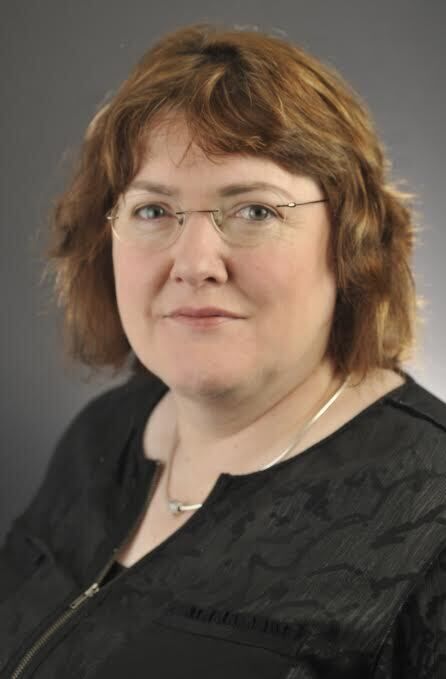Investing in people powers our future through the halo effect

A glimpse into the future - Professor of Quantum Physics Séamus Davis shows Minister for Further and Higher Education, Research, Innovation and Science James Lawless TD a Quantum Spin Noise Microscope in University College Cork. Minister Lawless opened the European Astronomical Society’s Annual Meeting, the largest conference held in Cork that sees over 1,500 scientists from across the world convene in UCC. The beginning of the EAS conference in UCC coincided with the eagerly anticipated release of the first Ultra-high-definition images and videos of the universe from the largest digital camera ever built at the Vera C. Rubin Observatory in Chile. Pic Daragh Mc Sweeney/Provision
A trip to the Tyndall National Institute is like peeping behind the curtain to see the future. It’s bustling with bleeding-edge research, and scientists lighting up and pushing out the boundaries of knowledge.
However, even amid that whirlwind of magnetic materials and micro needles, it was one comment in particular that stayed with me long after my recent visit ended.
During a discussion on talent, innovation, and global partnerships, the name of Ann Kelleher came up.
Ms Kelleher is an Irish graduate who began her journey at Munster Technological University and went on to lead technology development at Intel Corporation.
The team referred to the “halo effect” of her achievements: How her presence both reflected the excellence of Irish education and talent, and drew further investment, opportunity, and ambition into Ireland’s orbit.
It resonated with me, as it reflects my priority to ensure investment in research continues to underpin our economic prosperity.
The halo effect describes a multiplier: How one career can generate many more opportunities; how one breakthrough can open the door to a new stream of funding or collaboration; how one graduate can influence how others see the quality of Irish education and innovation.

And Ms Kelleher is far from a one-off; the same is true of Séamus Davis, whose early training at University College Cork laid the foundation for a career at the cutting edge of quantum physics.
After holding senior research posts at Berkeley and Cornell, Prof Davis was attracted back to Cork through an Science Foundation Ireland initiative as professor of quantum physics.
He now leads a globally-unique quantum microscopy facility on Irish soil. His recent award of the prestigious Oliver E Buckley Prize reflects not only personal excellence, but also the credibility of Ireland’s broader research and development ecosystem.
I have seen this phenomenon referenced in meetings with global giants like Microsoft, Intel, and Google, emerging spinouts, and apprentice-led SMEs across the country. The message is consistent: Irish-trained people carry with them a reputation that signals quality, rigour, and ingenuity and they want the pipeline to continue to flourish.
It is not however just the individual that matters; the real power lies in how their impact compounds, how one world-class graduate not only excels in their own right, but changes how Ireland is perceived.
At a recent roundtable with Ibec and major employers, this same idea came through clearly. From advanced manufacturing to financial services and the bioeconomy, employers highlighted the quality of Irish graduates, apprentices, and research talent as one of the defining advantages of locating in Ireland. Their view was that the people coming through our system bring intellectual strength, practical know-how, and a level of professionalism that garners international respect. They spark confidence in our institutions, in our education system, and in our national capacity to deliver talent at scale.

The economic returns are tangible. When multinationals set up in Ireland, they consistently cite our talent pipeline as a primary driver, but what can often be overlooked is the virtuous cycle that develops in the wake of this talent.
This cycle is the result of long- term policy choices, of investment, and of belief that our people are an engine of national value.
It is the belief that a young person entering a regional technological university today may be tomorrow’s world leader in AI, pharma, or engineering. It is the belief that apprentices developing skills on the job may one day found companies that change their communities and the lives those communities support.
There is a historical echo here. Sean Lemass’ transformation of the Irish economy in the late 1950s was built not only on trade liberalisation and industrial policy, but on the understanding that people that are skilled, educated, and motivated would be central to our economic growth. That remains true today. If we want a resilient, innovative, and inclusive economy, we must start by investing in those who will shape it.
Even in difficult economic times, the decision to continue investing in the programme for research in third-level institutions stands out for the strategic benefits that ensued.
This investment in capability would go on to underpin Ireland’s modern research landscape, establishing the physical and institutional conditions under which Ireland could attract both talent and industry.
Research leaders today often describe the programme as the scaffolding on which Ireland’s innovation economy was built, with the ripple effects extending well beyond the lab.
The halo effect of research investment manifested in local and national terms: Creating high-value jobs, strengthening our enterprise base, and anchoring foreign direct investment.
One of my key priorities is securing research as the foundation of our economic success. Making the same type of long-term investments that Lemass did to underpin our current prosperity.
Considerable funding under the National Development Plan will go towards funding a new programme that will bring forth the next wave of possibility, innovation, and human capital.
There are dozens of case studies that illustrate how this investment will lead to tangible outcomes like job creation, start-up formation, industry partnerships, and attraction of global companies to Ireland. And these examples will now help shape this critical next stage in our investment programme.

Our education and research system delivers far more than peer-reviewed papers and intellectual capital. My own experience bears this out.
I remember vividly my time studying maths and physics at Trinity. One of our lecturers, Professor Miller, was collaborating with a visiting professor. Their enthusiasm was contagious. They’d arrive at class straight from the chalk-dusted confines of the maths corridor, scribbling the morning’s breakthrough onto the acetate as they went. It was world-class research unfolding before our eyes and it transformed the classroom.
That collaboration inspired a cohort of undergraduates to believe they could contribute to the frontier of knowledge. That is what research-led teaching looks like and it’s a hallmark of the Irish system.
That is why I am expanding research capacity, prioritising student support, growing apprenticeships, and aligning skills policy with future industry needs.
It is also why we are deepening our international collaborations so that Irish people can operate and lead at the highest global level. But we must never lose sight of the core principle: When we invest in research and education, the return is not limited to the person in question.
It radiates outwards, to their employer, to their team, to their family and community, and to the country.
The halo effect that people spoke so excitedly about at the Tyndall National Institute is a phenomenon to be proud of and a strategy to build upon. Ultimately against a backdrop of deep economic uncertainty, Ireland’s future will be shaped by its people.
- James Lawless is minister for further and higher education, research, innovation, and science
Read More









